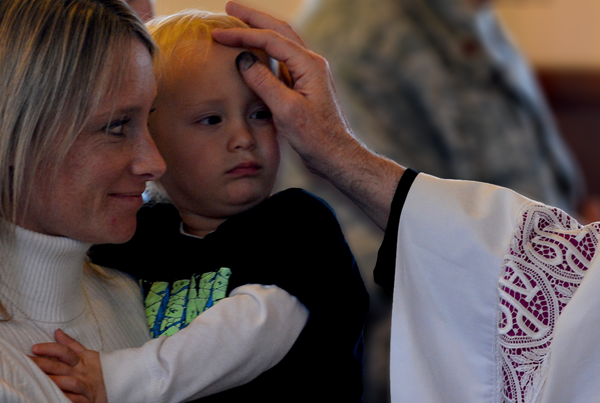Ash Wednesday can be among the most accessible of rituals in our liturgy for children and their families, IF it's not handled in a "stuffy" or overly formalistic way. The symbols involved are basic and very tangible. Children get this!
Avoid any "dumbing down" of the ritual, either in terms of ritual action (doing something different for children than for adults) or in terms of the explanations involved. Use language and imagery that children will understand, to be sure. A terrific new resource that could help you think through language and imagery for baptism (to which the Ash Wednesday rite is directly related) is I Belong to God, a study guide for "By Water and the Spirit" (our official teaching on baptism) for intergenerational study settings, including small children.
The imposition of ashes can and should also be related to baptism, just as in baptism all who are baptized receive the laying on of hands and (as our rubrics suggest) the sign of the cross upon their foreheads in with oil or water; so here at Ash Wednesday, all receive the sign of the cross in exactly the same place. If the basic connections to water and oil and the ashes are clear, the ashes simply make visible to all what probably could not be seen by most in baptism -- that we live our lives under the sign of the cross, which means we live our lives openly as the bond-slaves of Jesus. The cross is our "brand." While the ashes remind us we will all die (and children do understand this point, and it does not usually scare them!), the form of the ashes as the sign of the cross says we belong to Christ; and as such in these days ahead, we will try to live that out as fully as we can -- even as we lead others to make a similar commitment, come Easter.
The one thing I would note about the connection between water, oil, and ashes -- do not mix them! While you may usually mix OIL and ashes without incident, you should NOT mix WATER and ashes. This creates a caustic solution that can cause serious skin irritations.
Taylor Burton-Edwards was the Director of Worship Resources for the Discipleship Ministries.

